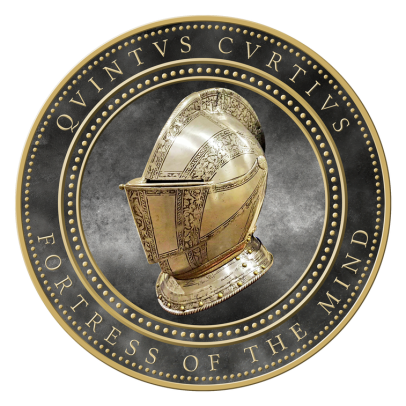
We read about how certain Roman emperors were “deified” after their deaths. Unfortunately it is not easy to learn the details about how this process was actually undertaken. I was fortunate to come across a rare description of how the deification (deificatio) ceremony took place in the humanist Biondo Flavio’s Roma Triumphans (Rome in Triumph). This Renaissance Latin work, published in 1459, contains a wealth of information on Roman religion and ceremonies, compiled from a painstaking review of the Latin sources available to him.
The use of the word deification perhaps is the source of some confusion. The Romans, of course, did not literally believe that their departed leaders were made into gods. Rather, deification was a formal ceremony reserved as a mark of the highest respect that the religious and civil authorities could confer on an emperor; in practice, it was very much like the modern Roman Catholic Church’s canonization of saints as a way to honor those who have rendered distinguished services. The Roman Church inherited many of the old imperial traditions before putting its own distinctive stamp on them. I do not mean that the specific procedure for deification and canonization was similar; I mean that the purpose and significance of deification was roughly analogous to the Church’s honor of canonization. Flavio tells us:
I do not doubt that it is commonly known–so that I do not particularly need to write about it–and generally understood that most of the Roman emperors were deified. But how this was actually done, and the specific procedure employed, I have not yet discovered in the extant Latin authors [Sed quo id fieret modo, quis adhiberetur in re ordo, apud Latinos nondum invenimus].
Recently, Marcus Barbo (the distinguished bishop of Treviso and a Venetian of patrician family) delivered to me a gift from my colleague Ognibene (from Brendola, near Vicenza), a man learned in Greek and Latin letters; this gift was an appropriate one for men nourished on the fine literary arts, and was provided to Rome in Triumph as it was being prepared. This was a written description–translated from the Greek historian Herodian–of the deification of the Roman emperor Severus. [II.42]
We should note that the emperor Severus (i.e., Septimius Severus) died in February 211. Flavio was able to acquire a description of how deification actually took place, but he had to rely on account of a Greek author. This kind of information in his day was not generally available, since many Greek works had not yet been translated into Latin or other European languages. What were the specifics of the process?

First, there was a period of public mourning and celebration. The dead emperor’s body was laid to rest in the manner befitting a monarch. A waxen image of the deceased was then crafted. This image was put on display in the palace, atop a large ivory couch that was draped with golden coverings. Mourning senators would sit on one side of the couch dressed in black, and on the other side sat distinguished or notable women dressed simply in white. The mourners engaged in the usual contemplations and paying of respects that one would expect to see at a state funeral. This stage of the proceedings lasted for about seven days. During this time, doctors would approach the couch and pretend to “inspect” the wax figure, and ceremoniously state that the emperor’s end was near.
After the waxen image was pronounced “dead,” a selected group of youths (prominent men in the senatorial and equestrian orders) would pick up the bier and carry it through the Via Sacra (Sacred Way) and then display it on the Roman Forum. The bier was laid down at a spot where there were stairs on both sides of it: on one side was a chorus of children, and on the other side a chorus of women. Songs and eulogies were sung in honor of the deceased.
The bier was then transported to the Field of Mars to a wooden structure specifically built to house the bier. Its outside was decorated with richly adorned tapestries, cloths, and paintings; inside it was filled with firewood. This small hut had several levels to it, and on its peak was placed an eagle, apparently in some sort of cage or secured at the apex. Herodian describes the shape of this “funeral pyre” as very much like a lighthouse (phari).

The emperor’s bier was carried up to the second story of the structure, and placed there along with all sorts of spices, fruits, and aromatic plants. Most of these offerings were sent as marks of tribute or respect from different parts of the empire. At this point, the equestrian order staged a large cavalry display outside the structure, while chanting various hymns and songs. Chariots also circumambulated the structure, driven by men dressed in red garments and wearing masks of famous generals and emperors of Roman history.
Once these ceremonies have been completed, the emperor’s successor would be given the honor of lighting the structure on fire. Once the fire begins to blaze, the eagle perched at the apex is released (probably by a rope connected to a cage). The flight of the eagle away from the burning funeral pyre was meant to convey the journey of the dead emperor’s soul to heaven, where it would reside permanently with the pantheon of heroes.
This is how the rite of deification is described by Biondo Flavio, who took it from the Greek historian Herodian. Ceremonies such as this perform vital functions: they affirm the community’s faith in the continuity of leadership; they honor the deeds of those who rendered service to the state; and they help soothe the distress of a community stricken with grief at the loss of a capable leader.
Read more in Stoic Paradoxes:


You must be logged in to post a comment.